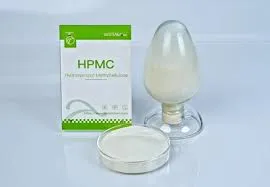
Oct . 16, 2024 20:07 Back to list
Leading Manufacturers of Methyl Hydroxyethyl Cellulose for Various Applications and Industries
The Rising Demand for Methyl Hydroxyethyl Cellulose An Overview of Manufacturers and Industry Trends
In recent years, the demand for Methyl Hydroxyethyl Cellulose (MHEC), a non-ionic cellulose ether, has surged across various industries including construction, pharmaceuticals, cosmetics, and food. Its exceptional properties, such as water retention, viscosity enhancement, and thickening capabilities, make it an indispensable ingredient in numerous applications. This article delves into the factors driving the growth of MHEC and highlights key manufacturers in the industry.
What is Methyl Hydroxyethyl Cellulose?
MHEC is derived from natural cellulose, a polysaccharide obtained from plant cell walls. The chemical modification process involves the introduction of methyl and hydroxyethyl groups, which enhance the solubility and functionality of cellulose. MHEC is characterized by its white to off-white powder form, which dissolves easily in water, forming a clear and viscous solution. This versatility allows MHEC to be utilized in various formulations, making it a valuable compound in industrial applications.
Key Applications of MHEC
1. Construction Industry The construction sector is one of the largest consumers of MHEC. It is primarily used in tile adhesives, dry-mix mortars, and waterproofing compounds. MHEC improves workability, extends open time, and enhances adhesion properties in cementitious materials, making it essential for modern construction techniques.
2. Pharmaceuticals In the pharmaceutical industry, MHEC serves as a binder, thickener, and stabilizer in drug formulations. Its controlled release properties are advantageous in the development of sustained-release medications, making it a critical ingredient in the formulation of various drug delivery systems.
3. Cosmetics and Personal Care MHEC is widely used in cosmetics and personal care products such as lotions, creams, and gels. It contributes to the viscosity and texture of these products, providing a desirable sensory experience for consumers.
4. Food Industry In the food sector, MHEC functions as a food additive, providing thickening, stabilizing, and emulsifying properties. It is commonly used in sauces, dressings, and dairy products to improve texture and shelf-life.
methyl hydroxyethyl cellulose manufacturers

Manufacturers of MHEC
With the escalating demand for MHEC, numerous manufacturers have emerged globally, each striving to meet the diverse needs of various industries. Some prominent MHEC manufacturers include
- Dow Chemical Company Dow is a leader in cellulose derivatives and offers a variety of MHEC products designed for construction and textile applications. The company's commitment to innovation ensures that they remain at the forefront of market trends.
- Shin-Etsu Chemical Co. A major player in the chemical industry, Shin-Etsu produces high-quality MHEC used in various applications, particularly in the pharmaceuticals and personal care sectors. Their extensive research and development efforts focus on enhancing the performance of cellulose derivatives.
- Ashland Global Holdings Inc. Ashland is known for its specialty chemicals and has a broad portfolio of MHEC products. The company emphasizes sustainability and eco-friendly practices, responding to consumer demand for green products.
- Wacker Chemie AG Wacker's MHEC products are well-regarded in the construction industry for their performance and reliability. The company prioritizes quality and sustainability in its manufacturing processes.
- HPMC Co., Ltd. A growing manufacturer in the MHEC market, HPMC specializes in customizing products to meet specific industry needs, establishing strong relationships with clients.
Conclusion
The market for Methyl Hydroxyethyl Cellulose continues to expand as industries recognize the benefits of this versatile polymer. Manufacturers are innovating and adapting their offerings to meet evolving consumer demands and regulatory standards. As the global economy shifts towards sustainable solutions, companies that prioritize environmentally friendly practices in their production processes are likely to gain a competitive edge in the MHEC market. The future for MHEC appears bright, with ongoing research and development paving the way for new applications and improved formulations across various sectors.
-
Versatile Hpmc Uses in Different Industries
NewsJun.19,2025
-
Redispersible Powder's Role in Enhancing Durability of Construction Products
NewsJun.19,2025
-
Hydroxyethyl Cellulose Applications Driving Green Industrial Processes
NewsJun.19,2025
-
Exploring Different Redispersible Polymer Powder
NewsJun.19,2025
-
Choosing the Right Mortar Bonding Agent
NewsJun.19,2025
-
Applications and Significance of China Hpmc in Modern Industries
NewsJun.19,2025







